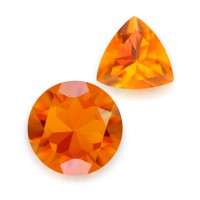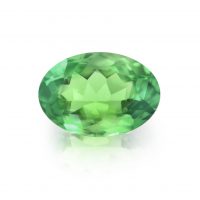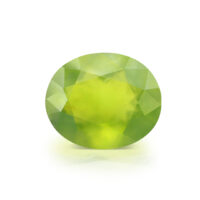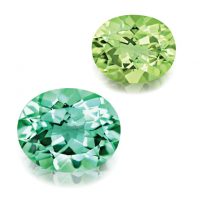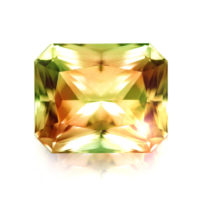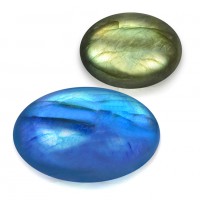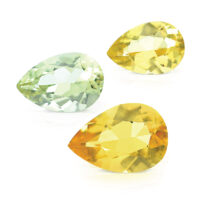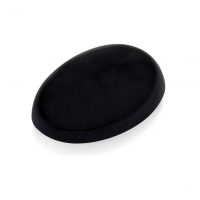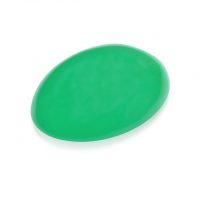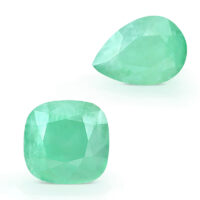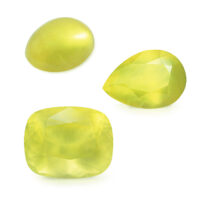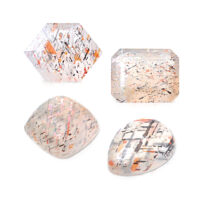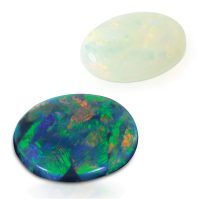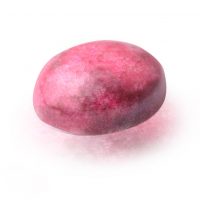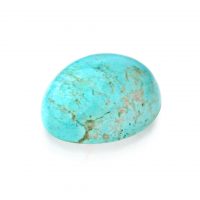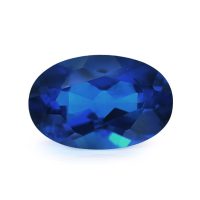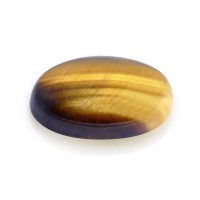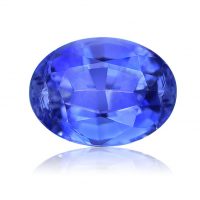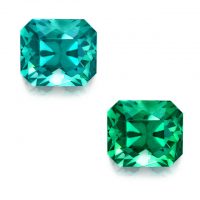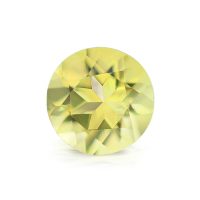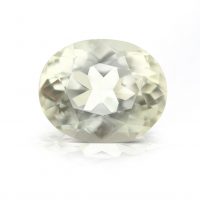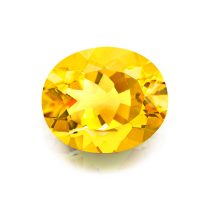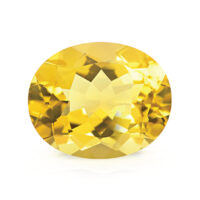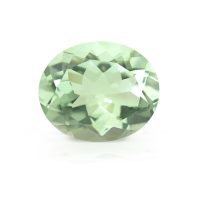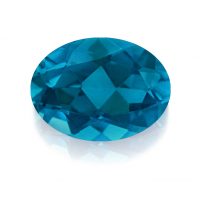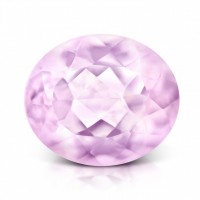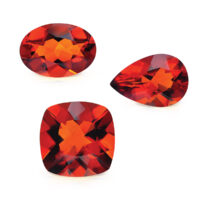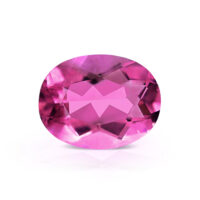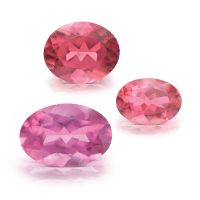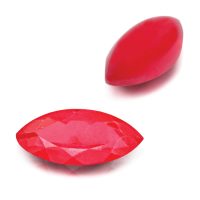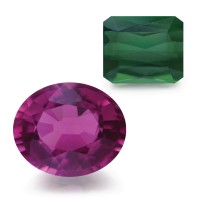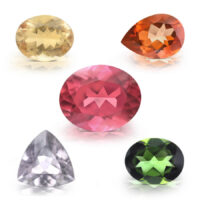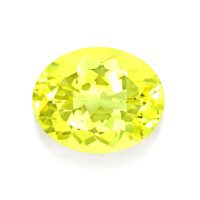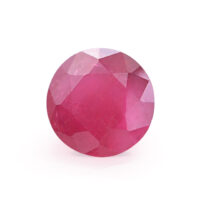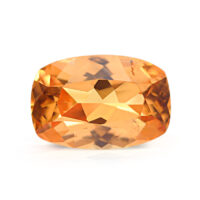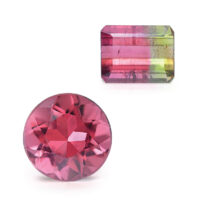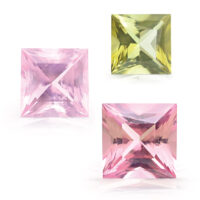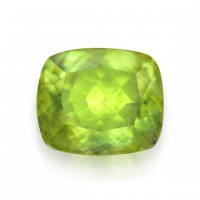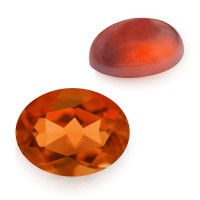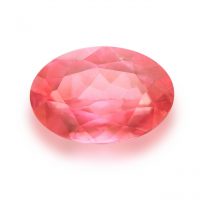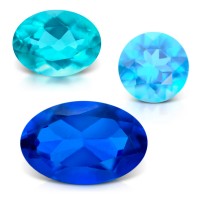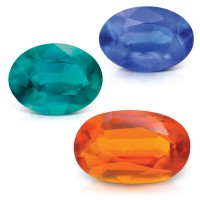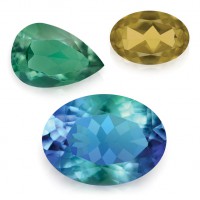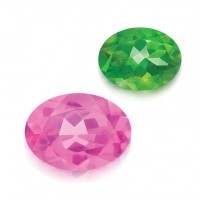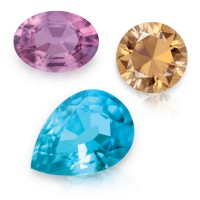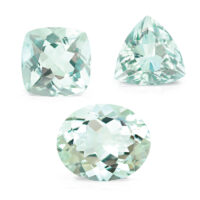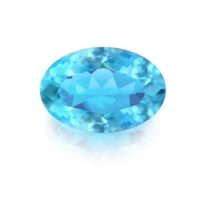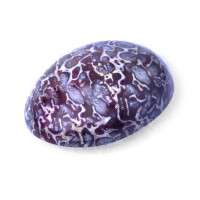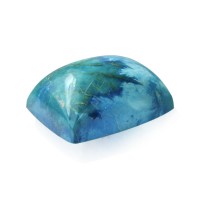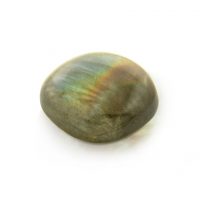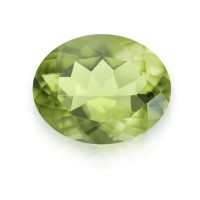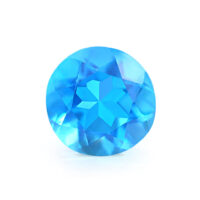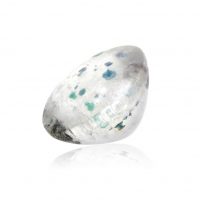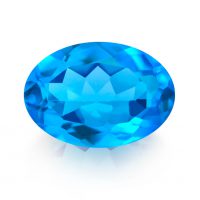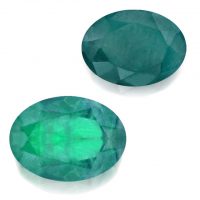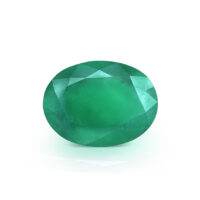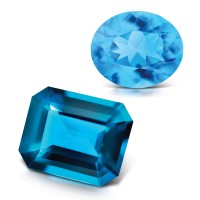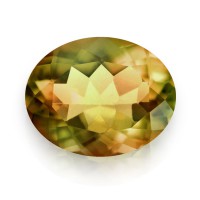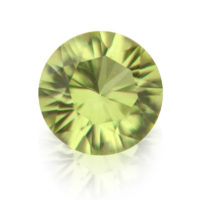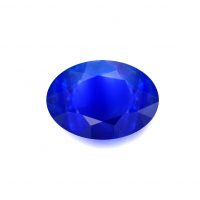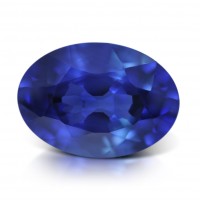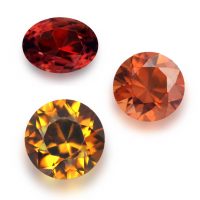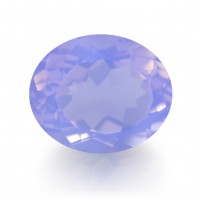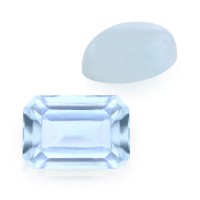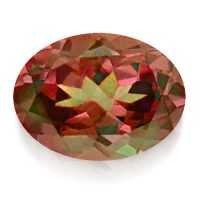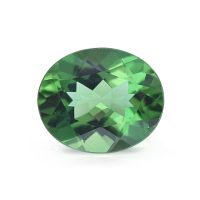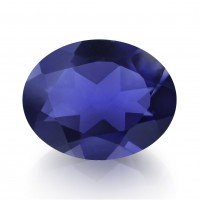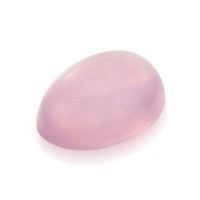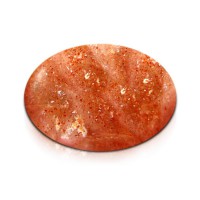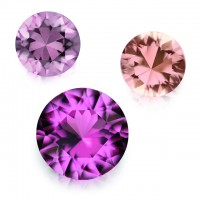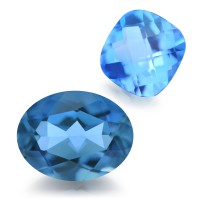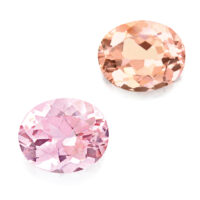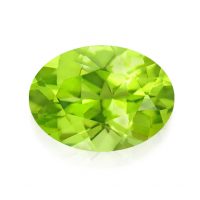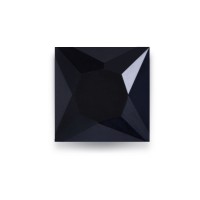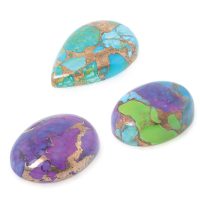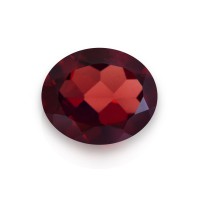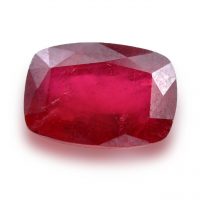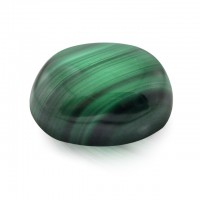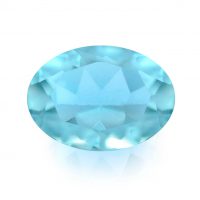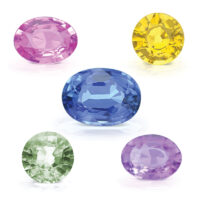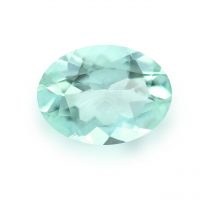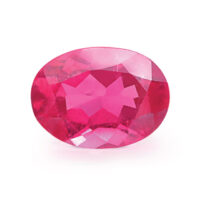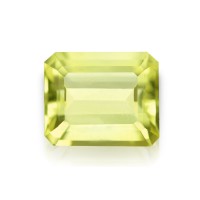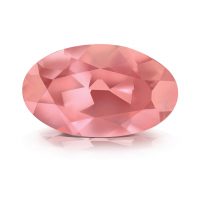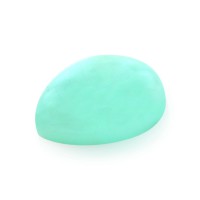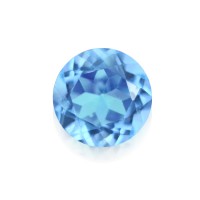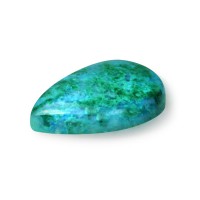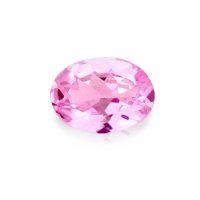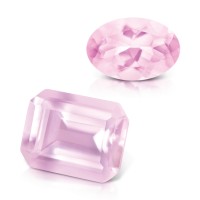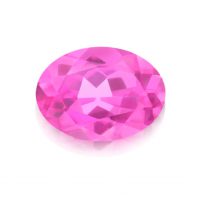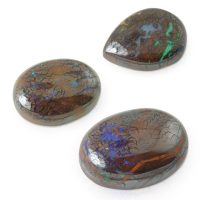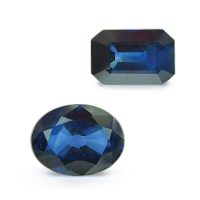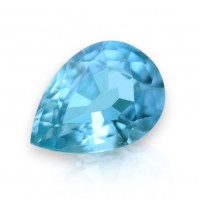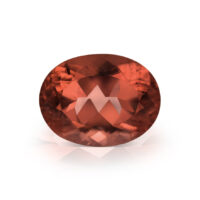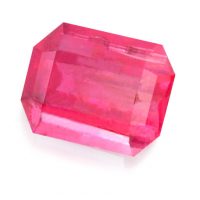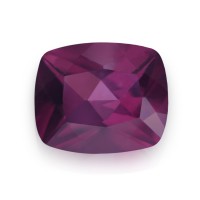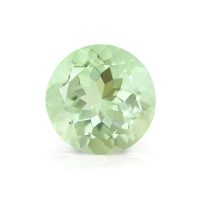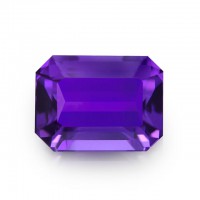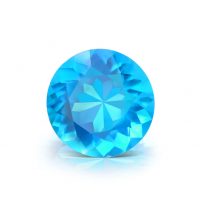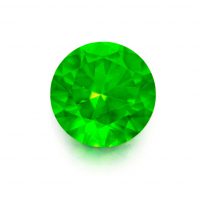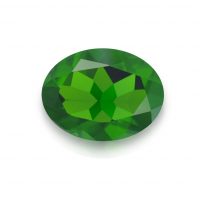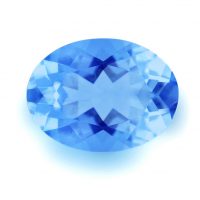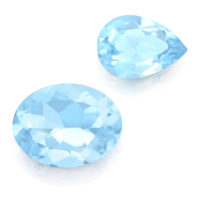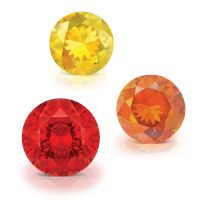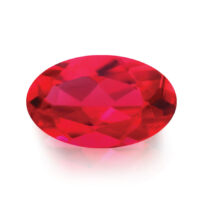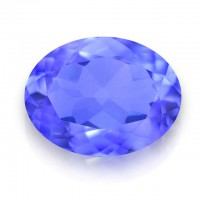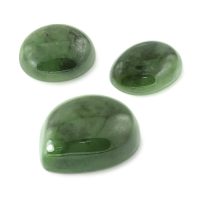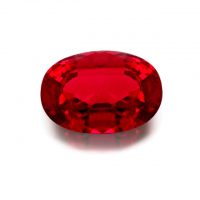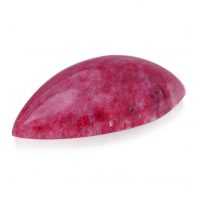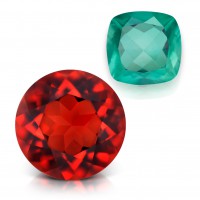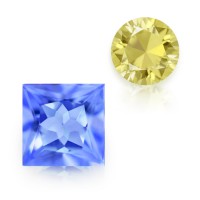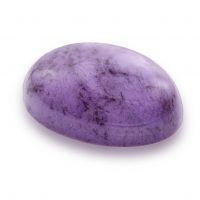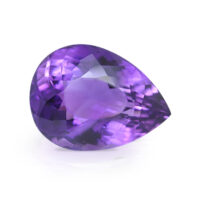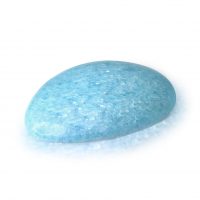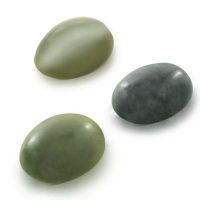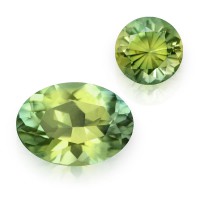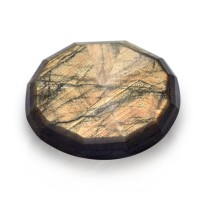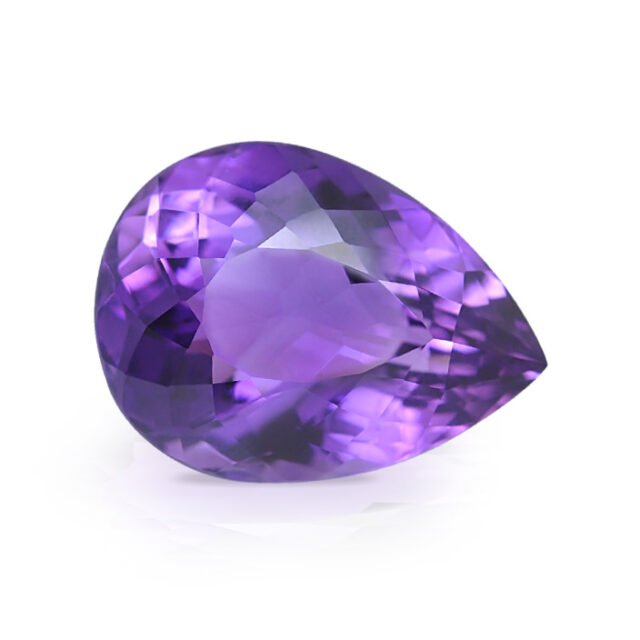

An acclaimed Amethyst source with a famous pedigree, Uruguayan Amethyst was unearthed by German immigrants in the 19th century at Artigas in northern Uruguay, bordering southern Brazil. Uruguayan Amethyst displays intense, natural deep purples with coveted blue and red facet flashes, high clarity, good brilliance, and an attractive luster; key quality considerations for this gemstone. Some of the very best Amethyst available and extremely limited in this quality, Uruguayan Amethyst continuously experiences high global demand. Uruguayan Amethyst is prized for its rich color, spectacular beauty, and everyday wear-ability.
Hardness 7
Refractive Index 1.544 – 1.553
Relative Density 2.65
Enhancement None
Beauty
Color is Amethyst’s most important consideration, with the deeper shades commanding higher prices. The most valuable Amethysts are medium to dark toned, transparent, and pure violet with no shading toward red or blue, although blue or red flashes are desirable and highly coveted. Although you’ll sometimes see the historic term ‘Siberian’ used to describe intensely colored Amethyst from any locale, this is technically incorrect. Amethyst crystals occur with reasonably few inclusions, so the standard is eye-clean, the highest quality clarity grade for colored gemstones. As it’s popular with both lapidaries and jewelers, you’ll find more fanciful shapes and cuts of Amethyst than you will for many other gemstones. Regardless of the cut, look for an even color and good brilliance.
Uruguayan Amethyst’s beauty is primarily determined by color, with the most valuable gemstones being transparent, pure purple with a deep saturation and tone, and desirable blue/red flashes. Uruguayan Amethyst also displays an attractive color change from purple in sunlight (candescent), to pink in candlelight (incandescent).
Our Uruguayan Amethyst is optimally faceted by experienced lapidaries who carefully orientate each crystal to maximize its colorful brilliance, maintaining a high-polish/luster, good overall appearance (outline, profile and proportions), and an eye-clean clarity.
February’s birthstone, Amethyst was set into gold rings as early as 2500 BC, and is a gemstone rich in myth, legend, and lore. Colored by trace amounts of iron, Amethyst is a variety of macrocrystalline (large crystal) Quartz that comes in pastel roses to deep purples. Some other popular macrocrystalline quartzes are Citrine, Rose Quartz, and Tiger’s Eye. Cryptocrystalline (small crystal) Quartz gemstones include, Agate, Chalcedony, Jasper, and Onyx. Derived from the Greek ‘amethustos’, which means ‘not drunk’, Amethyst is mythologically associated with Dionysus (Bacchus to the Romans), the Greek god of wine, and was once fashioned into talismans and goblets to prevent intoxication. Despite Dionysus’s divine mission to end care and worry, he spread his fair share of mayhem, especially after a few quarts of wine! The legend goes that a drunken Dionysus, none too happy after being shunned by a passing mortal, swore revenge on the next unfortunate to cross his path. Enter Amethyst, a young, innocent, beautiful maiden (and a worshipper of the goddess Diana), followed by two hungry tigers’ courtesy of Dionysus. As Amethyst screamed, Dionysus filled his goblet. Divinely unimpressed by Dionysus’s shenanigans, all-seeing Diana quickly turned Amethyst into a Quartz statue, as pure as her virtue. While protected from harm, unfortunately the spell couldn’t be reversed, causing a guilt-ridden Dionysus to weep tears of sorrow. Collapsing as his tears dripped into his goblet, its contents splashed onto the statue, creating the purple gem we call Amethyst. Adopting words from other languages, the Greek name is probably a play on the Hebrew for a purple gem, ‘achlamath’, which itself is possibly derived from the Persian ‘shemest’. While legend would have us believe the Greeks really thought Amethyst would prevent intoxication, writing in the 1st century Pliny the Elder (23-79 AD), Roman historian and author of Historia Naturalis (the world’s first encyclopedia), was skeptical, remarking, “the lying Magi promise that these gems are an antidote to drunkenness.” Yet in his’ Book of Precious Stones’, the 13th century Arabic scholar Mohammed Ben Mansur affirms that, “wine drunk out of a goblet of Amethyst does not intoxicate.” However, if you fill an Amethyst goblet with water, it does look a lot like wine, so perhaps this legend has a grain of truth after all… Long before Roman emperors donned the bright purple ‘toga picta’, pharaohs, kings and queens made purple a potent symbol of sovereignty. From the signet of Cleopatra, an Amethyst engraved with a figure of Bacchus, to the Amethyst necklace of Queen Charlotte, wife of George III of England, Amethyst will forever be linked to fashion, prestige, and power. Because of this heritage, it’s not surprising that Amethyst was popular with the Catholic Church in the middle ages. Thought to promote celibacy, it soon became known as the ‘papal stone’. Even today, bishops still wear Amethyst rings. Leonardo Da Vinci (1452-1519) wrote that Amethyst was able to dissipate evil thoughts and quicken the intelligence, while Pliny the Elder reported that if the name of the moon or sun was engraved upon an Amethyst hung from the neck by the hair of a baboon it became a charm against witchcraft and beneficial to those petitioning princes. Amethyst might be a gem of antiquity, but it remains an important fashion gemstone due to its timeless beauty.
Rarity
Uruguay continues to yield some of the world’s finest Amethyst, by both reputation and experience, at deposits located approximately 31 kilometers south of the city of Artigas. With quality varying depending on origin, Amethysts’ main sources include, Brazil, Madagascar, Uruguay, and Zambia. The benchmark for top quality Amethyst, Uruguayan Amethysts’ deeper colors command higher prices due to their comparative rarity, noting ours represent the top two percent.
The capital of the Artigas Department of Uruguay, Artigas is named for the national hero, José Gervasio Artigas. Initially mined in open pits, most Uruguayan Amethysts are currently extracted from basalt (dark volcanic rock) galleries. These mining galleries are not only acclaimed for their prized Amethyst geodes (a rock containing a cavity lined with crystals/minerals), but also Agates and other Quartz varieties.
Geodes are true geological mysteries, that make you appreciate the rare majesty of gemstones. Underneath their hard exterior lies a beautiful surprise! Geodes start their lives as a hollow bubble inside a layer of rock. Over time water soaks through the hard, rocky outside of the bubble. As the mineral-rich water moves through the bubble, tiny crystals are left behind and with the passage of millions of years, this flow of water gradually forms more crystals inside the empty space. While many Quartz varieties form geodes, Amethyst and Citrine Geodes that display well-structured, pure colored crystals in an attractive arrangement are especially coveted by mineral collectors. The crystals produced in vugs and geodes vary in color saturation, hence the chance of bicolored varieties, with the crystal color of these formations often concentrated at their tips.
Several notable mines working the deposit include, Catalán Grande, La Bolsa, San Eugenio, and Santa Ana. The world’s largest Amethyst, ‘The Empress of Uruguay’ (3.27 meters high, weighing 2.5 tons), was unearthed at Artigas in 2007.
With over 90 percent of gemstones enhanced, and many Amethysts’ heated to lighter or darken their hue, Uruguayan Amethyst is one of the few gemstones that are totally natural and unenhanced, accentuating both their rarity and desirability.
Durability & Care
Uruguayan Amethyst is a durable gemstone (Mohs’ Hardness: 7) well-suited to everyday wear. Always store Uruguayan Amethyst carefully to avoid scuffs and scratches. Clean with gentle soap and lukewarm water, scrubbing behind the gem with a very soft toothbrush as necessary. After cleaning, pat dry with a soft towel or chamois cloth.
Map Location

Click map to enlarge
